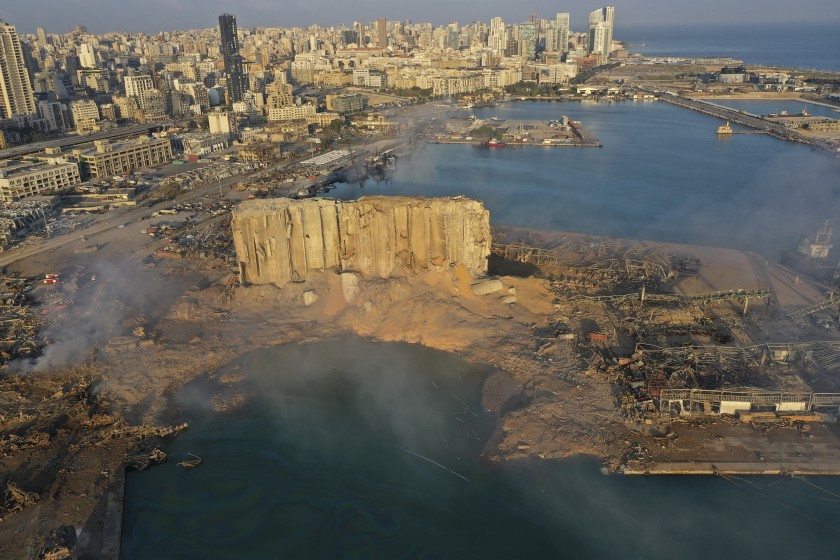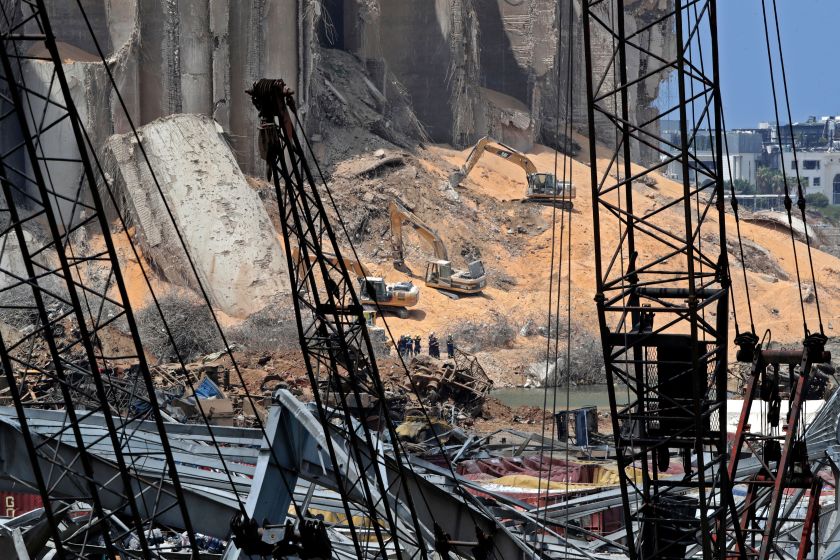This blog post is a collaboration with @thesciencetown on Instagram.
Take a look into the aftermath of the Beirut Explosion, from lingering chemicals to harmful dust particles and a surge in COVID-19 cases.
(TL;DR at bottom 😊)
Approximate Read Time: 4 minutes!
Background of the Beirut Explosion:
On August 4, 2020, 2750 tons of ammonium nitrate exploded in the port of Beirut. 200+ people were killed; 5,000+ were injured; and 300,000 residents were left temporarily homeless. The explosion was so strong that it created a 45 foot-deep crater, and it was registered as a magnitude 3.3 earthquake.
“I could see the smoke coming out of the port, and then these noises sort of faded, and I said: ‘Looks like it’s over.’ Then a huge explosion came up, and I heard a terrible wheeze, a sinister noise. I saw a huge cloud flashing in my direction. I lived through the civil war in Lebanon, but this was the moment I was sure I was going to die.”
Salim Adib, epidemiologist at the American University of Beirut (AUB)

The explosion has had major negative impacts on a country that was already struggling with the COVID-19 pandemic, government bankruptcy, and a 55% poverty rate.
After the explosion, Beirut residents took to the streets with brooms and shovels to clean up their city. And around late August/early September, reconstruction began.

Health Concerns of the Explosion (Increased COVID-19 Cases & Contaminated Water Supplies):
Before the explosion, there were 15-20 COVID-19 deaths and a few 1000 cases in Lebanon. After the explosion, as of September 2, Lebanon had 177 deaths and 18,375 cases.
The explosion led to an increase of COVID-19 cases because more people stopped caring about wearing masks or social distancing. Scientists observed that big groups were going out to clean up the streets without taking precautions.

Additionally, the explosion created a further lack of space and the lack of resources in close-by hospitals:
“We were overwhelmed for 48 hours—all our intensive care units were full. The first thing I thought was that it’s going to reduce coronavirus prevention to zero for the next few days. All of us were worried that we would have to deal with more and more COVID-19 patients.”
Rola Husni, head of the infectious disease division and infection control program at the Lebanese American University Medical Center-Rizk Hospital
Furthermore, COVID-19 research has been postponed in Beirut until the end of September.
Aside from COVID-19, scientists are also concerned about potentially contaminated water supplies. Some building pipes broke in the explosion, and sewage may be infiltrating into the main water lines. The American University of Beirut (AUB) is currently testing the water supply.
Lingering Chemicals?
Scientists claim that most fumes from the explosion (various types of nitrate oxides) disappeared from the air within days following the explosion. However, some toxic particles may remain in the dust that has been spread over the city.
Researchers at the AUB have collected dozens of samples from the ground and air to test for high levels of heavy metals, asbestos, and leftover chemicals in the air. They predict an increase of asthma, pulmonary diseases, and allergy cases as a result of these dust particles.
The scientists are also studying the dust in hopes of determining the specifics of the chemicals and hazardous materials that caused the explosion:
“We also don’t know what else was stored at the port, so for example, if batteries were there, heavy metals would deposit onto the ground.”
Najat Saliba, atmospheric chemist and director of AUB’s Nature Conservation Center

Thank you for reading this piece. I hope you enjoyed it & will further ponder the knowledge it brings to light! I encourage you to leave a comment and/or start a discussion in the section below!
Feel free to contact me at brainsproutblog@gmail.com and follow the blog @brainsproutblog on Instagram for updates!
Resources to Help Beirut:
TL;DR:
- On August 4, 2020, 2750 tons of ammonium nitrate exploded in the port of Beirut. 200+ people were killed; 5,000+ were injured; and 300,000 residents were left temporarily homeless.
- The explosion led to an increase of COVID-19 cases because more people stopped caring about wearing masks or social distancing. Scientists observed that big groups were going out to clean up the streets without taking precautions. Additionally, the explosion created a further lack of space and the lack of resources in close-by hospitals
- Researchers at the American University of Beirut have collected dozens of samples from the ground and air to test for high levels of heavy metals, asbestos, and leftover chemicals in the air. They predict an increase of asthma, pulmonary diseases, and allergy cases as a result of these dust particles.
Glossary:
- Ammonium nitrate: the ammonium salt of nitric acid; an inorganic molecular entity that is normally in fertilizers and explosives
- Asbesto: naturally occurring minerals and carcinogens (cancer-causing substance)
- Asthma: a condition in which ones airways narrow and constrict, causing breathing difficulties
- Pulmonary disease: a chronic inflammatory lung disease that causes obstructed airflow
Video Resource:
Read more (sources)!
- https://www.sciencemag.org/news/2020/09/absolutely-horrendous-scientists-discuss-beirut-s-blast-and-how-they-are-coping-its
- https://www.latimes.com/world-nation/story/2020-08-18/beirut-blast-cleanup-investigation-continues
- https://www.harpersbazaar.com/culture/politics/a33522530/how-to-help-beirut-resources-lebanon-explosion/
Image Sources:
- https://www.latimes.com/world-nation/story/2020-08-18/beirut-blast-cleanup-investigation-continues
- https://www.latimes.com/world-nation/story/2020-08-18/beirut-blast-cleanup-investigation-continues
- https://www.sciencemag.org/news/2020/09/absolutely-horrendous-scientists-discuss-beirut-s-blast-and-how-they-are-coping-its
- https://www.latimes.com/world-nation/story/2020-08-18/beirut-blast-cleanup-investigation-continues

Nice article that avoids the typical bs on other sites
Keep up the good work!
LikeLike
That’s the goal! Thank you 🙂
LikeLiked by 1 person